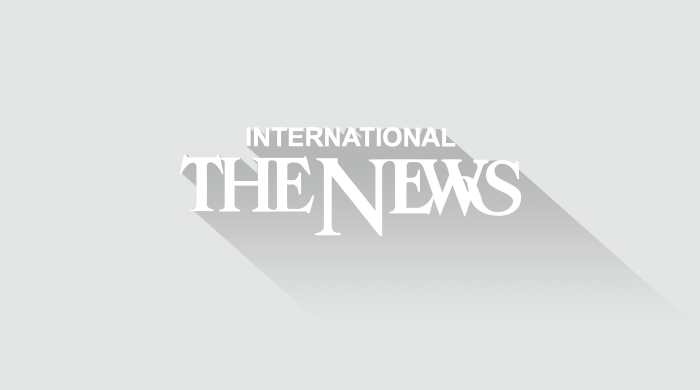For decades, Pakistan has struggled to balance economic growth with financial stability. The years 2022 and 2023 serve as stark reminders of what happens when this balance is lost -- soaring inflation, dwindling foreign reserves, and an economy teetering on the edge of default.
For decades, Pakistan has struggled to balance economic growth with financial stability. The years 2022 and 2023 serve as stark reminders of what happens when this balance is lost -- soaring inflation, dwindling foreign reserves, and an economy teetering on the edge of default.
To avoid another crisis, policymakers must rethink their approach, ensuring that stability does not come at the cost of long-term economic growth.
Interest rates and inflation: Pakistan’s response to economic turbulence in 2022-23 was textbook International Monetary Fund (IMF) economics -- aggressive interest rate hikes to curb inflation and control the current account deficit. The logic was simple: higher interest rates make borrowing expensive, reducing consumption and imports, thus stabilising foreign reserves.
But this approach ignored a crucial reality -- Pakistan’s inflation has primarily been cost-pushed, not demand-driven. Supply chain disruptions, currency devaluation, and rising global commodity prices were the real culprits. Raising interest rates to 22 per cent did little to fix these issues but made borrowing prohibitively expensive for businesses, stifling investment and economic growth.
Now, inflation has cooled to 1-2 per cent, yet interest rates remain stubbornly high. Conventional wisdom suggests that lower inflation should lead to lower interest rates, yet Pakistan finds itself trapped in policy inertia where reducing rates too quickly might cause capital flight or speculative activities. But the real question is: What kind of investment is Pakistan attracting with high interest rates?
The problem with unproductive investments: Even if the State Bank slashes rates to 2-3 per cent, it does not guarantee that money will flow into productive sectors. Pakistan’s financial ecosystem is structured in a way that incentivises speculative, unproductive investments rather than wealth creation.
1. Real-estate speculation: Land trading -- especially the buying and selling of plots -- has become Pakistan’s favourite investment avenue. Instead of developing land into housing or commercial projects, investors simply trade files and plots, profiting from price appreciation without adding any real economic value. This locks billions of rupees in ‘dead money’, preventing capital from flowing into industries that generate employment and exports.
2. Car hoarding and own money: Pakistan’s auto sector is another unproductive avenue. Due to artificial supply shortages, cars are booked months in advance, and buyers resell them at a premium (‘own money’). This speculative trading drives inflation and keeps car prices artificially high, benefiting middlemen rather than manufacturers or consumers.
Regulate unproductive sectors, incentivise real economic activity, and build a system where capital flows into industries that generate employment and exports. It’s not rocket science -- it’s just smart policy
3. Hoarding of dollars and gold: With limited investment avenues, people park their money in dollars and gold as hedges against inflation. This weakens the rupee, increases the cost of imports, and contributes to economic instability.
The way forward -- directing capital into productive sectors: The government has a straightforward choice -- either allow this unproductive cycle to continue or take bold steps to redirect capital into sectors that contribute to economic growth.
1. Regulating land and car trading: Pakistan can curb real-estate speculation by imposing higher taxes on non-utilised plots; penalising file trading to encourage actual development; and restricting the resale of cars within a specific timeframe to eliminate ‘own money’ profits.
2. Encouraging stock market investments: A thriving stock market channels investments into businesses that create jobs and expand economic output. Incentives such as tax benefits on stock dividends, IPO-friendly regulations, and investor education can make equities a more attractive option than land or gold.
3. Strengthening productive sectors: Government policies should focus on manufacturing and exports -- offering subsidised loans for industrial expansion. Second, construction (not just land trading) -- encouraging vertical housing projects rather than speculative land purchases. And, third, small business growth -- facilitating access to capital for entrepreneurs.
4. Controlling dollar hoarding: Stronger monitoring of foreign exchange transactions, higher penalties for undocumented dollar holdings, and incentives for foreign remittances through banking channels can curb the informal dollar market.
Growth and stability are not mutually exclusive: Pakistan’s economic policymakers must move beyond short-term stabilisation measures and focus on long-term, sustainable growth. A high-interest-rate economy that discourages investment is no better than an unstable one. The challenge is not just reducing interest rates but ensuring that lower rates translate into productive investments rather than speculative bubbles.
The solution is clear: regulate unproductive sectors, incentivise real economic activity, and build a system where capital flows into industries that generate employment and exports. It’s not rocket science -- it’s just smart policy. The sooner Pakistan realises this, the faster it can transition from survival mode to genuine prosperity.
The writer is a consultant on economic policy and teaches financial markets in Pakistan. He can be reached at: hissan3@gmail.com







